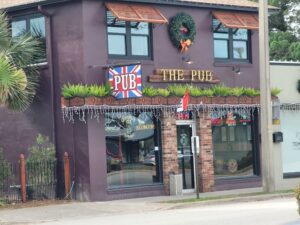St. Augustine nature parks offer scenic beauty and outdoor activities for every visitor. From pristine beaches to lush wildlife reserves, explore landscapes perfect for kayaking, hiking, and bird watching all year round.
Featured Natural Areas
Anastasia State Park

A 1,600-acre protected paradise featuring pristine beaches, tidal marshes, and maritime hammocks. The park offers:
- 4 miles of unspoiled beach
- Nature trails through ancient dunes
- Bird watching opportunities
- Kayak and paddleboard rentals
- Camping facilities Learn more about Anastasia State Park
Washington Oaks Gardens State Park

Known for unique coquina rock formations along its beach and formal gardens, Washington Oaks combines natural beauty with cultivated landscapes. Features include:
- Historic formal gardens
- Scenic beach walks
- Native plant displays
- Fishing opportunities
- Picnic facilities
Guana Tolomato Matanzas Reserve

This coastal reserve protects one of the largest remaining stretches of undeveloped coastline in northeast Florida, offering:
- Miles of hiking trails
- Wildlife viewing
- Research center
- Beach access points
- Educational programs
Beach Access Points
St. Augustine Beach

Family-friendly beach with easy access and amenities:
- Fishing pier
- Pavilion
- Splash pad
- Volleyball courts
- Nearby dining options
Vilano Beach

Less crowded alternative with:
- Driving access
- Fishing opportunities
- Surfing spots
- Scenic views
- Waterfront restaurants
Wildlife Viewing

Native Species
Common wildlife sightings include:
- Shore birds
- Sea turtles (seasonal)
- Dolphins
- Manatees
- Various fish species
Best Viewing Spots
- Matanzas Inlet
- Bird Island Park
- Salt Run
- Beach pier
- Marsh walkways
Outdoor Activities
Water Sports

- Kayaking
- Paddleboarding
- Surfing
- Fishing
- Boat tours
Land Activities
- Hiking
- Biking
- Bird watching
- Photography
- Beach combing
Planning Your Visit
Best Times to Visit
- Early morning: Best for wildlife viewing and photography
- Low tide: Ideal for beach walking and shell collecting
- Weekdays: Less crowded
- Off-season: More serene experience
What to Bring
- Sunscreen and hat
- Water bottle
- Insect repellent
- Binoculars
- Camera
Weather Considerations
- Summer (June-September): Hot and humid, afternoon thunderstorms common
- Winter (December-February): Mild temperatures, less crowded
- Spring/Fall: Ideal conditions for outdoor activities
Conservation and Protection
St. Augustine’s natural areas are carefully protected through various conservation efforts. Visitors can help preserve these spaces by:
- Staying on marked trails
- Properly disposing of trash
- Respecting wildlife
- Following park rules
- Supporting conservation efforts
Tips for Visitors
Photography
- Golden hour (sunrise/sunset) offers best lighting
- High tide changes beach landscape
- Various wildlife photo opportunities
- Scenic vistas at state parks
- Photo spot suggestions on our map
Family Activities
- Junior Ranger programs
- Guided nature walks
- Shell collecting
- Tidepool exploration
- Environmental education programs
Accessibility
- Many parks offer accessible boardwalks
- Beach wheelchairs available at some locations
- Paved trails at certain parks
- Accessible parking
- Modified program options
Combine With Other Activities
Make the most of your outdoor experience by combining it with:
Getting There
Most natural areas are easily accessible by car and offer parking. Some locations can be reached via:
- Trolley services
- Bicycle
- Walking trails
- Water taxi
- Local tours
Explore our interactive map to find the perfect outdoor destination for your interests, and consider staying at one of our recommended accommodations for easy access to these natural wonders.
This guide is regularly updated to ensure accuracy and the best possible visitor experience. Last updated: December 2024










